Mastering
Analog mastering from stereo file
You do the mixing and Joakim does the mastering of your stereo file with analog signal processing. Basically which is the sound that topped charts all over the world. This option represents our lowest price.
Central to the sound in our analog mastering is the Focusrite Blue 315 Mk I equalizer. Because the Blue 315 is the ultimate analog master stereo equalizer. The topology is based on the same circuit solutions as the Focusrite Studio Console, with the sound of studios such as Electric Lady and Ocean Way and the legacy of Rupert Neve.
Joakim performs all the necessary editing, coding and more, and offers the option of delivering the finished master directly over the internet. Of course, the starting cost, singback, instrumental and Mastered for iTunes are included in the price!
Loudness war is over…
Tired of over-compressed music? That’s why Panorama Music does mastering with the right level for all media.
More and more streaming services use loudness normalization so that all music is experienced as equally loud. As a result of this, music with too high loudness is reduced in volume, in some cases even up to 5 dB. Therefore, you gain nothing from harder mastering with higher loudness than recommended.
Loudness is measured in LUFS, “loudness units relative to full scale”, a measurement of the total amount of audio energy between two points in time divided by the duration of the measurement. Simply put, loudness is measured over the entire song and gets an average value. Many streaming services recommend a loudness of 14 LUFS.
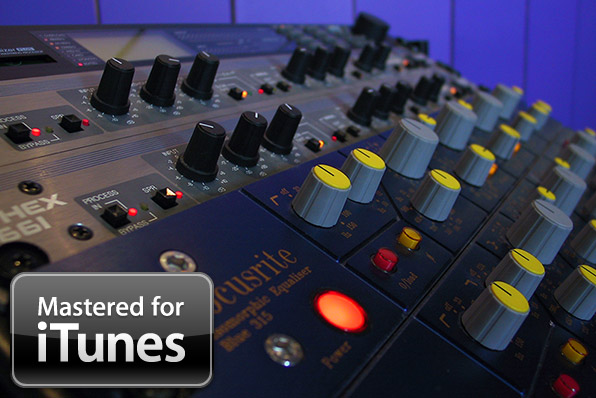
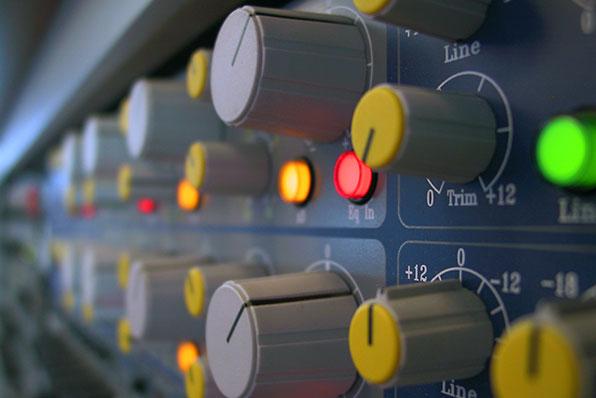
What is mastering?
Mastering music is done for several reasons. For example, mastering can be seen as a final quality check and adaptation so that the music is suitable for use in the context it is intended for.
Something to strive for is that the music should be perceived in the same way regardless of where it is listened to.Because it should make the same impression if you listen in headphones, in the car, on the phone, on the radio, on TV, in a large PA system and so on.
In mastering, the music’s frequency content, dynamics and loudness are corrected and adjusted to ensure that the music sounds as intended and that no unpleasant surprises should appear in different listening situations. Furthermore, mastering is also done to emphasize the character of the music and the intentions the creator has with the music.
How does it work in practice?
Preparations
Preferably do not use mastering plug-ins (EQ, compressor, limiter, etc.) on the master bus if you mix in the computer, as it complicates the mastering work. When you make your mixes, it doesn’t matter what volume level your finished mix is at. Because we correct and adapt it in the mastering process to be at a level suitable for streaming media. However, just be careful to ensure that the level is not too high so that it goes red and clips the master bus. You should rather mix too soft than too loud.
File export
We can accept most common file formats and combinations of sample-rate and bit-depth. But we prefer WAV file 44.1kHz 24bit Stereo interleaved.
File transfer
Put your exported WAV files in a folder that you then compress to .ZIP. You can send the files using file transfer services such as Sprend or Wetransfer. You can also send a link to a folder on cloud services such as Dropbox or Google Drive. However, we do not recommend using OneDrive for file sharing.
Mastering
We carry out all work on a ”first come – first served” basis, i.e. according to the order in which the material arrives. If you have special requests for express delivery and a short deadline, contact us and we will solve it!
Listening and feedback
We always send you a finished mastered MP3 to listen to. After that, you are welcome with feedback about the result and if anything needs to be changed. If you find something wrong with your mix, it’s fine to send us a new file that we use instead. We work with analog equipment when mastering, which makes recall of settings a little more complicated than if you only work digitally. As a result, we therefore kindly ask you to try to feedback as soon as possible after listening to the mastering.
Delivery
We deliver finished master to you usually as WAV file 44.1kHz 24bit Stereo interleaved, after payment. Other file formats on request.
The mastering process – what is done to your music
During mastering, the song material undergoes several stages of correction and adjustment. The different steps are usually done in the order described below, since the previous step always affects the next. But even for this very reason, it may be necessary to go back to previous steps and adjust continuously during the course of the process.
Audition
First we listen through the song material to get an idea of the sound, genre, style and any obvious errors and flaws. And if you attached reference music for the sound, we’ll compare the song material against it.
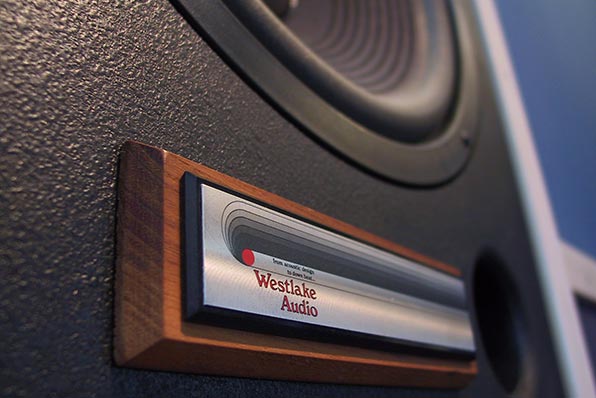
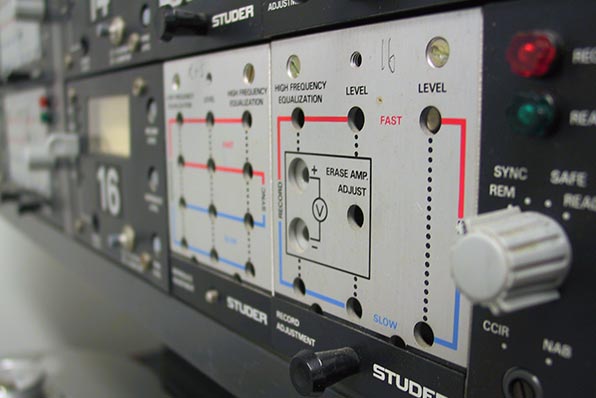
Correction
The first step in the mastering process is that we correct unnatural frequency balance in the music. For example, it can be vocals or an instrument where certain notes stand out, appear resonant and take over the soundscape in a way that is not intended. We correct these problems in limited frequency ranges with negative EQ, either static or dynamic. If the vocals are excessively sibilant with strongly prominent S sounds, we reduce them with De-essers. We usually make the correction with digital tools for increased precision.
Dynamics
After that, the second step in the mastering process is to work with the dynamics of the music. Here we use different types of analog compressors and compression techniques to highlight the content of the music. The goal is to strive for the music to have the right emphasis and clarity.
Frequency balance
The third step in the mastering process is that we work with the music’s frequency balance. Here we use analog Equalizer to adjust the frequency ranges in the music that need to be highlighted. Here, too, the goal is to strive for the music to have the right punch and clarity.
Loudness
The fourth and final step in the mastering process is that we work with the loudness of the music. Panorama Music follows the latest loudness recommendations for streaming media. Currently, the recommendations for streaming media, such as Spotify, Apple Music, Tidal, YouTube and more, are a full song loudness level of -14 LUFS, and shorter periods of -9 LUFS and highest peak of -1dB. Furthermore, we also ensure with various analysis tools that the True Peak never exceeds the permitted value.
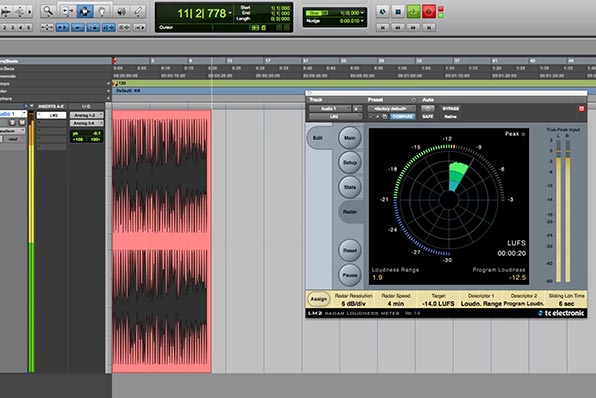
Price list Mastering – from stereo file
Order now!
Contact:
Phone: +46 733-82 10 67
Email: joakim(at)panoramamusic.org
Or fill in the form and you will be contacted.